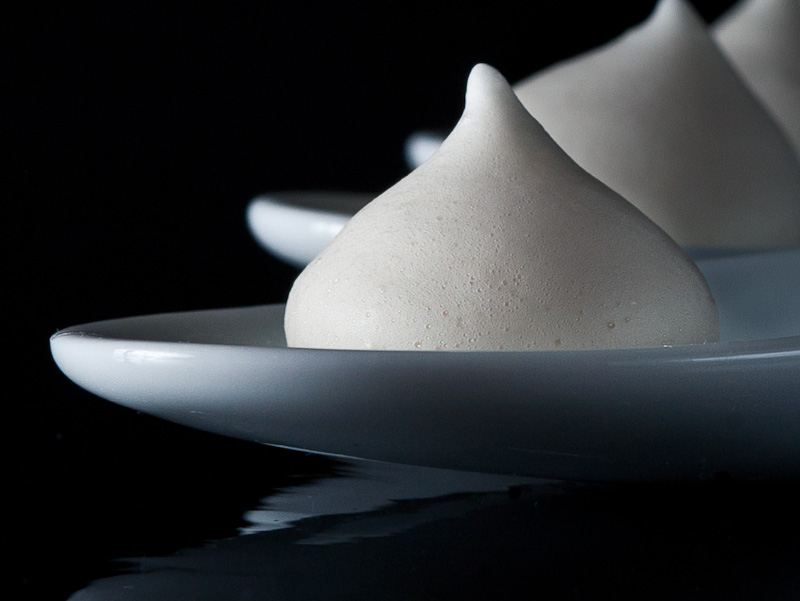
Seeking to maximize mileage with the foie gras, at the same time I was working on the previous Pear dish I also made this one. Working on these both in tandem was actually quite fun from a budgetary standpoint. I managed to time most everything well, and was able to serve them both simultaneously.
The foie for this dish is prepared exactly the same as in the previous one. Since I blew most of my photographic wad on the foie gras in the last post, I spent most of my time with this dish just trying to take badass photos of the final plating. This was made easier by the fact that the final plating assembly is “Put Thing On Plate”.
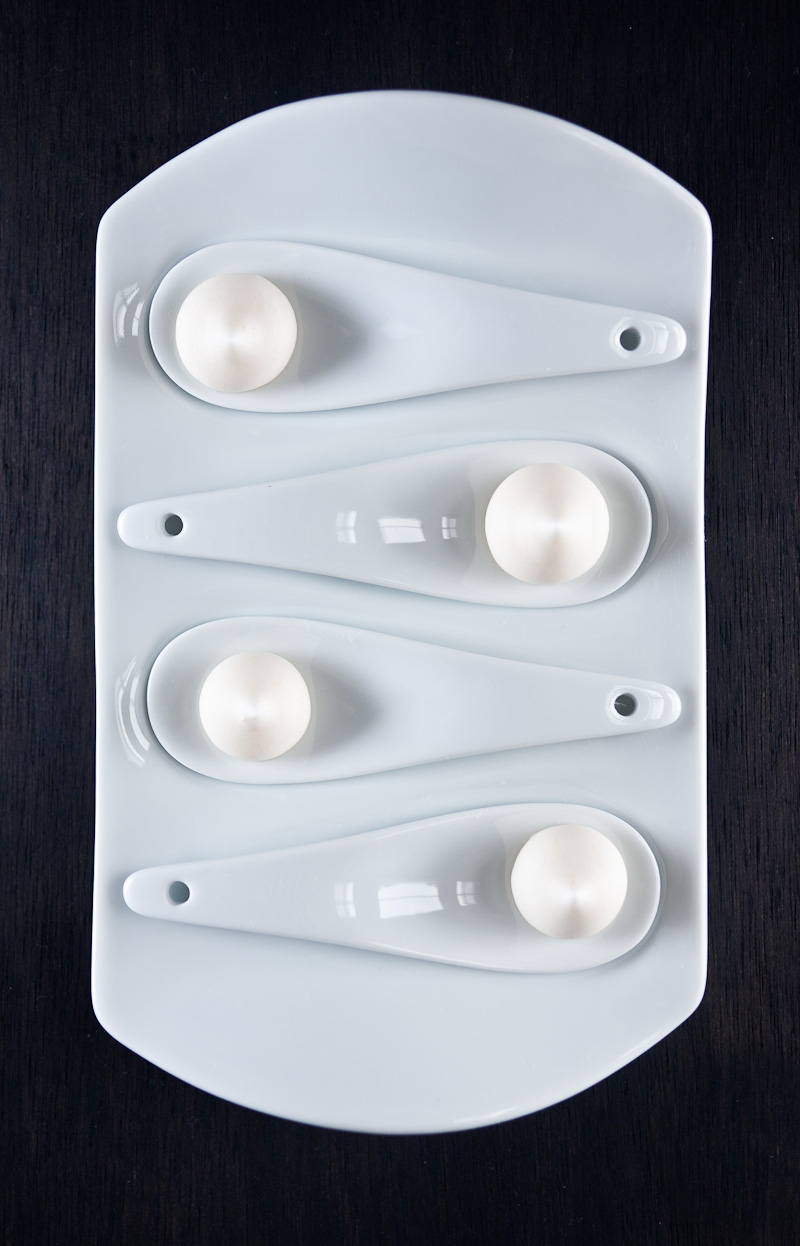
“Thing” in this case is a crispy, lighter-than-air puff about twice the size of a Hershey’s Kiss. The puff starts with a tea made with some cinnamon and cayenne. Hot water is poured over the two spices and let to steep overnight. It’s then mixed with magic dust:
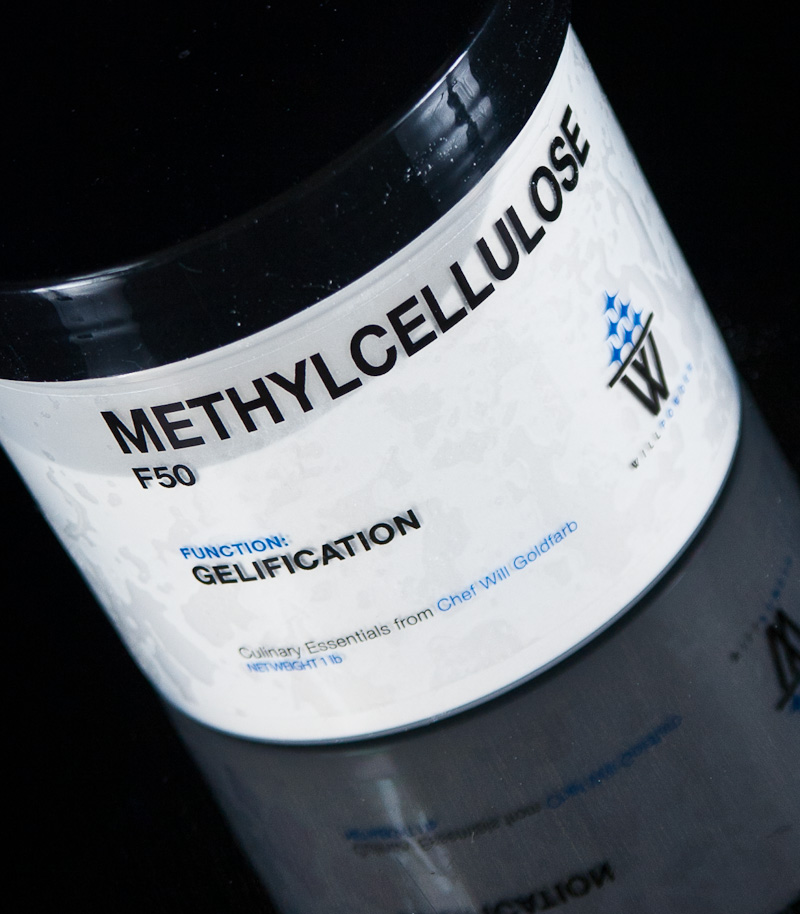
If you’re a traditionalist, you might have been persuaded in my last post to think the divide between classical chefs like Thomas Keller and avant-garde chefs like Grant Achatz is almost negligible. Preparing a torchon of fois gras is the same in Yountville as it is in Chicago and in France, so that must mean all the rest of this stuff isn’t really that weird, right?
From the Wikipedia page for Methylcellulose:
Methylcellulose is a chemical compound derived from cellulose. It is a hydrophilic white powder in pure form and dissolves in cold (but not in hot) water, forming a clear viscous solution or gel. It is sold under a variety of trade names and is used as a thickener and emulsifier in various food and cosmetic products, and also as a treatment of constipation. Like cellulose, it is not digestible, not toxic, and not an allergen.
Uses:
Methylcellulose is often added to hair shampoos, tooth pastes and liquid soaps, to generate their characteristic thick consistency.
It is used to treat constipation, diverticulosis,hemorrhoids and irritable bowel syndrome. A well-known trade name of methylcellulose when used as a drug is Citrucel.
Methylcellulose is used as a variable viscosity personal lubricant; it is the main ingredient in K-Y Jelly.
Solutions containing methylcellulose are used to make artificial tears or saliva.
Methylcellulose is used in the manufacture of capsules in nutritional supplements, its edible and nontoxic properties provide a vegetarian alternative to the use of gelatin.
Methylcellulose, as a gel, has the unique property of setting when hot and melting when cold.
Methylcellulose finds a major application as a performance additive in construction materials. It is added to mortar dry mixes. It is the main ingredient in many wallpaper pastes. It is also used as a binder in pastel crayons.
The slimy, gooey appearance of an appropriate preparation of methylcellulose with water, in addition to its nontoxic, nonallergenic, and edible properties, makes it popular for use in special effects for motion pictures and television wherever vile slimes must be simulated. In the film Ghostbusters, for example, the gooey substance the supernatural entities used to “slime” the Ghostbusters was mostly a thick water solution of methylcellulose. The Aliens ooze and drip a great deal of methylcellulose — especially the queen. Methylcellulose has been used to safely simulate molten materials, as well. In several of the Terminator films, it was back-lit with colored gels and films to reproduce the heated glow of iron in the large pouring ladles used to transport the metal from the smelting ovens to the various molds and forms. Methylcellulose was also a stand-in for the lava flows on the volcanic surface of Mustafar in Star Wars Episode III :Revenge of the Sith.
♫♩ ♪ ♬ AWE – soooome ♫♩ ♪ ♬
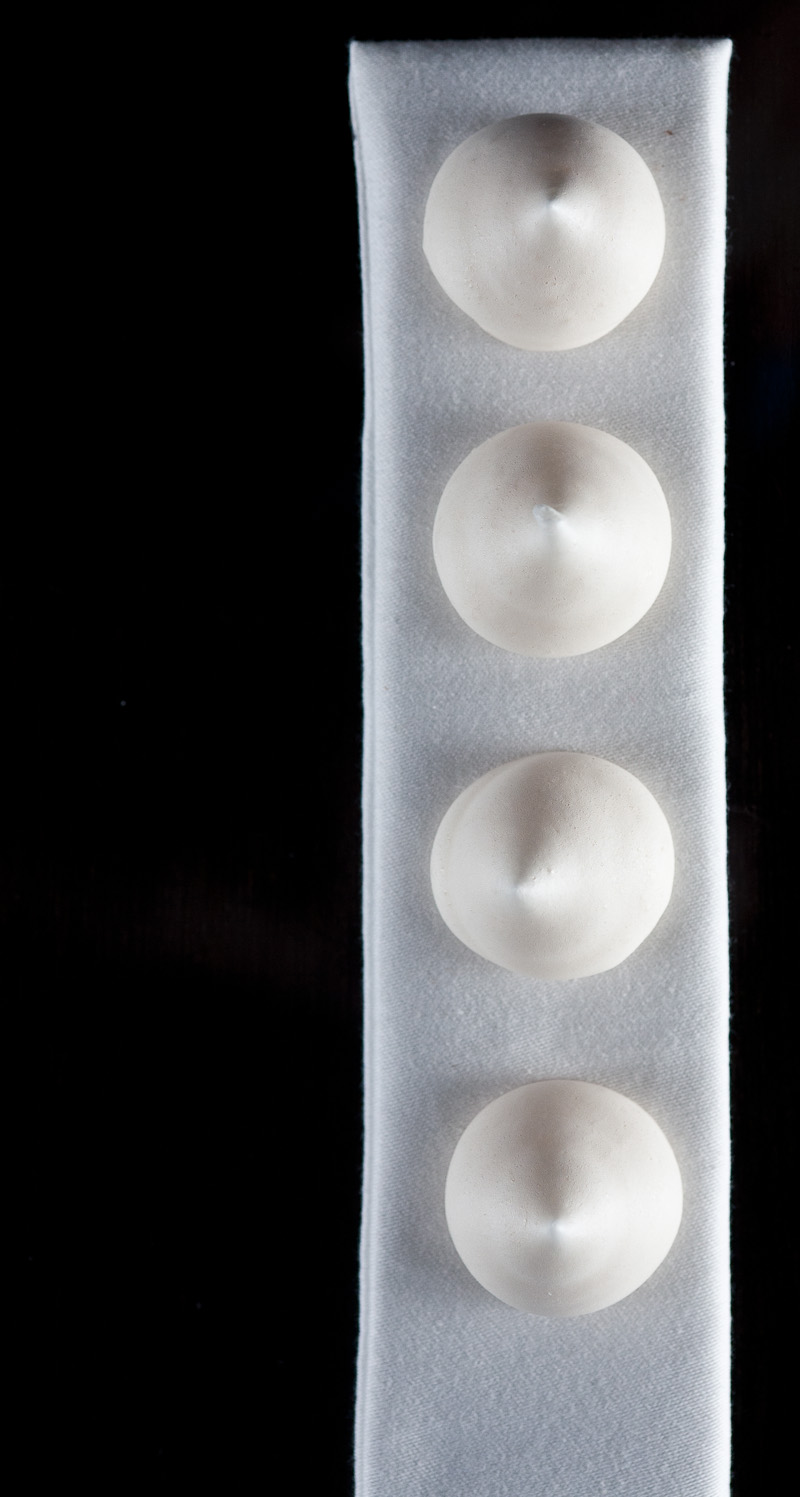
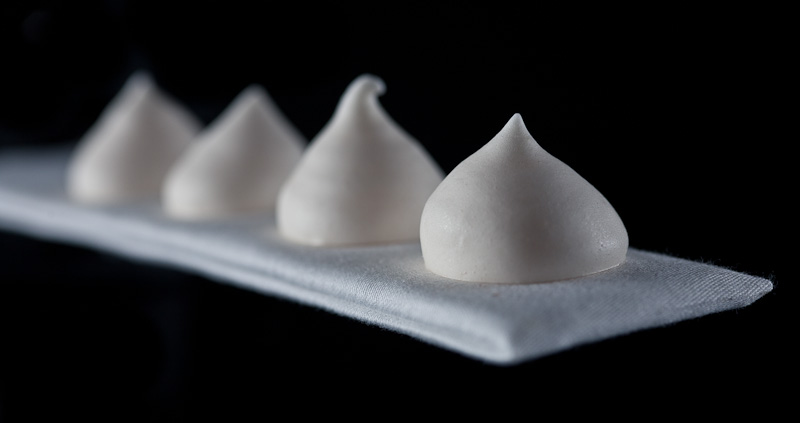
Since methylcellulose needs to be incorporated into cold liquids, I used an immersion blender to mix it into the refrigerated tea. It started frothing up noticeably. I use a Kitchenaid to whip the mixture at high speed for a few minutes until it — miraculously — turned into a stiff-peaked meringue. I spooned the cinnamon meringue into a pastry bag, and piped dozens of little bite-sized cinnamon-methocel kisses onto a dehydrator tray.
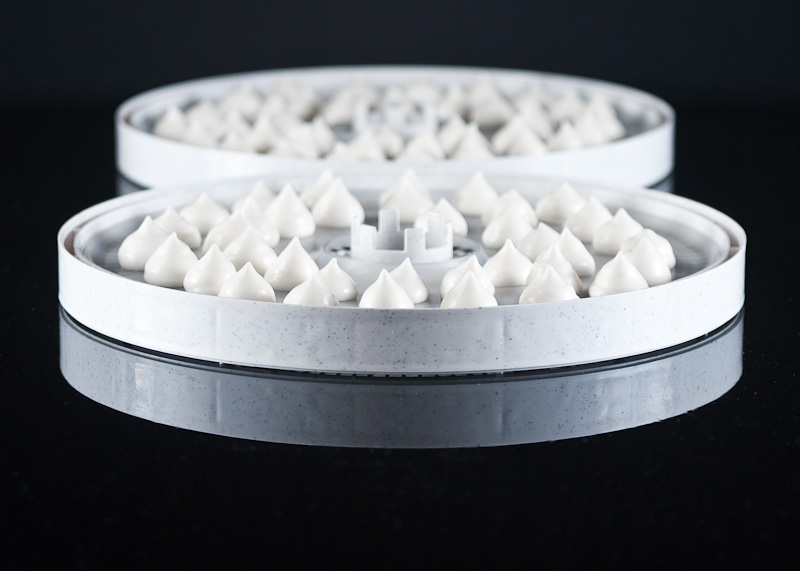
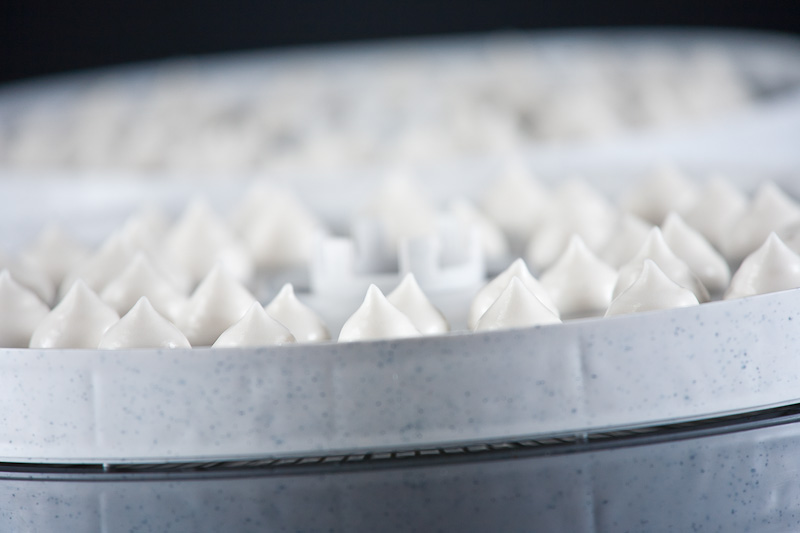
While these dehydrated for several hours, I worked on making some apple candy. This involved heating some apple cider with sugar and pectin, bringing to just above the soft ball stage, and pouring into a pan to let cool. It hardens into a gel-like candy the consistency of something like a licorice stick. I diced these into small 1/4″ cubes.
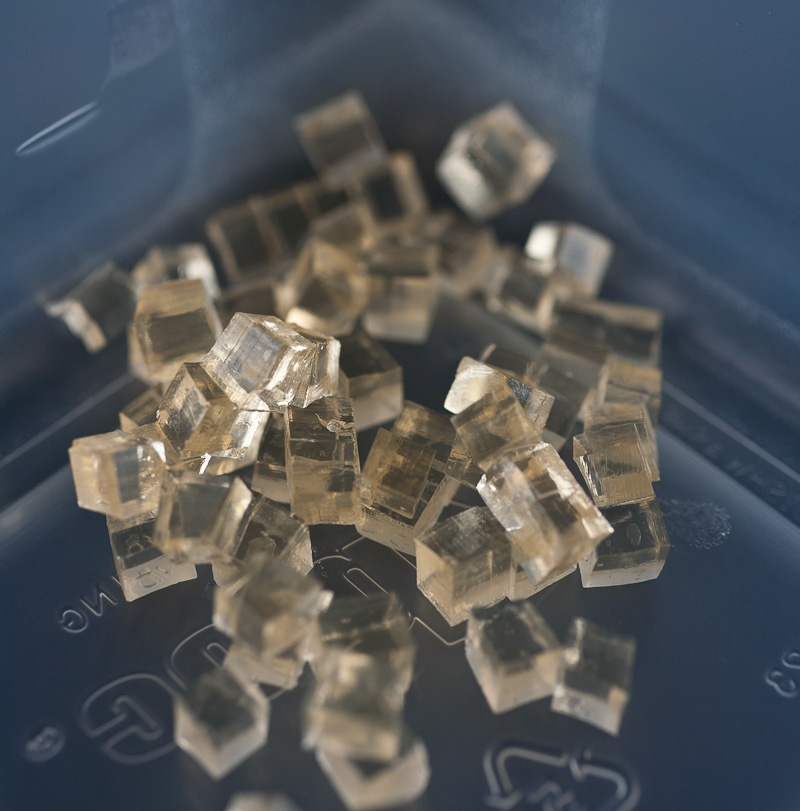
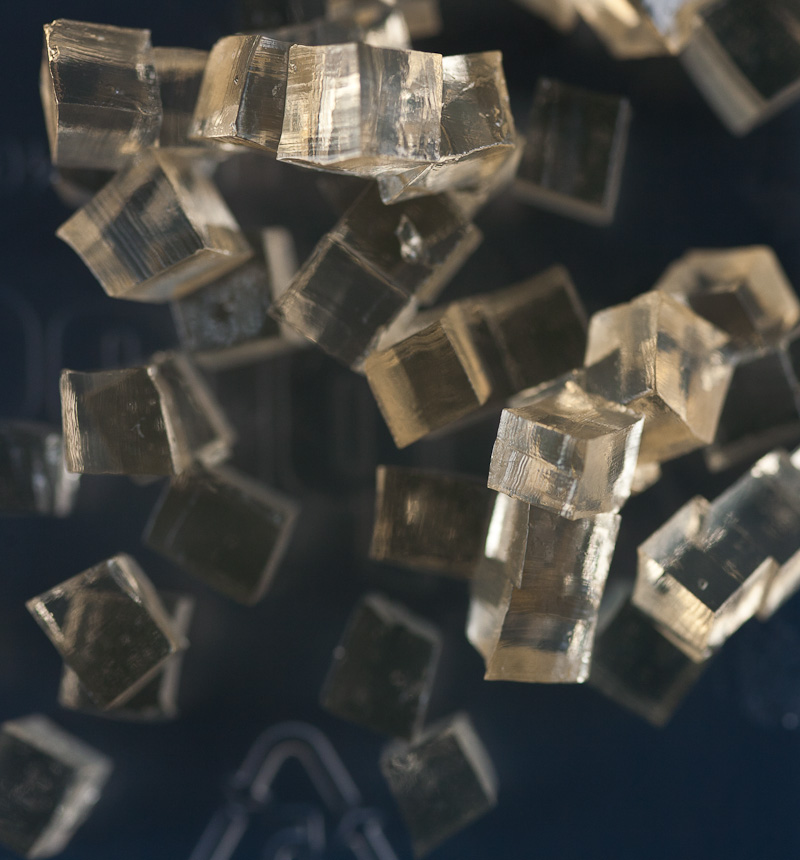
When I checked the puffs several hours later, I found they’d hardened into crispy, airy hard shells; you could drop them on a table and they’d shatter, and when I bit into one it almost vaporized in my mouth, leaving behind the sense I’d just sucked on a few Red Hots candies. Using some small sculpting tools, I poked a small hole in the center of the bottom of each puff, then carefully hollowed out as much of the interior as I could. The interior crushed into dust when I rotated the tool around inside of it, which fell out of the puff with a few soft taps on the table.
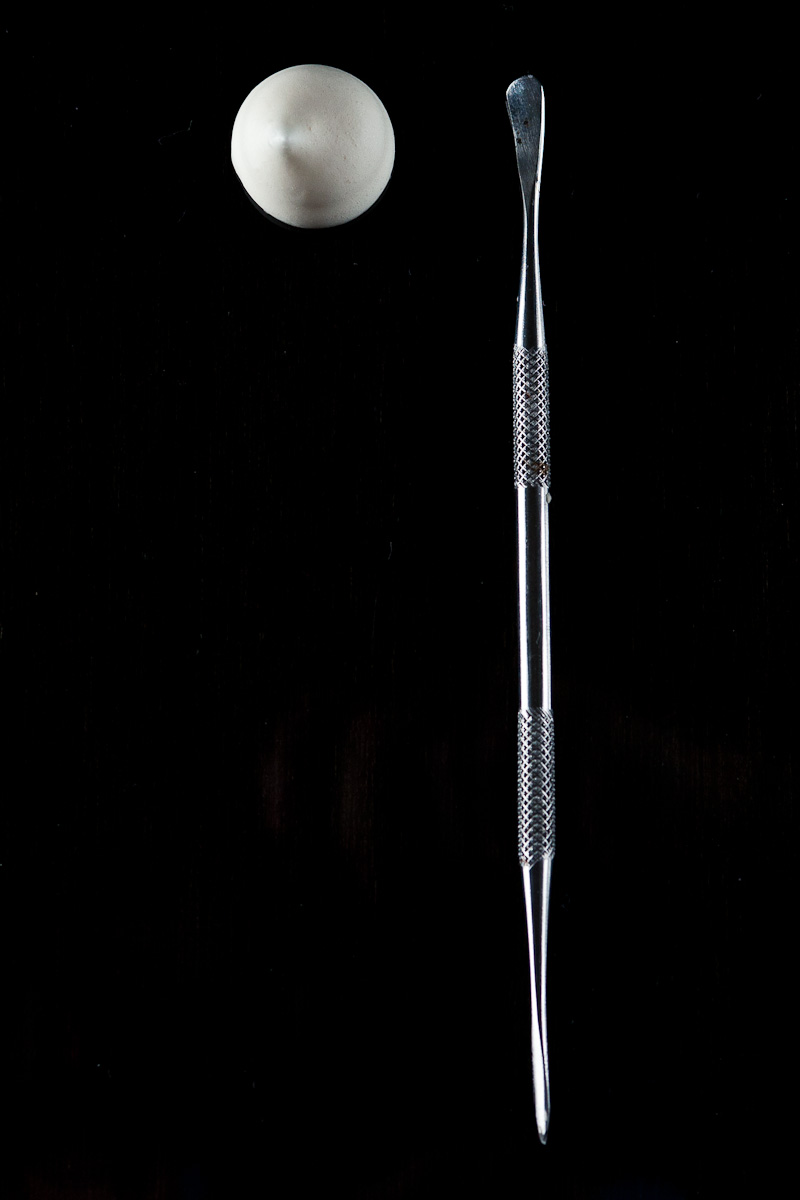
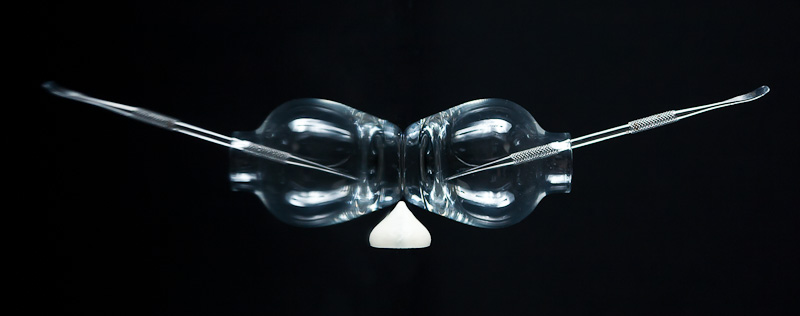
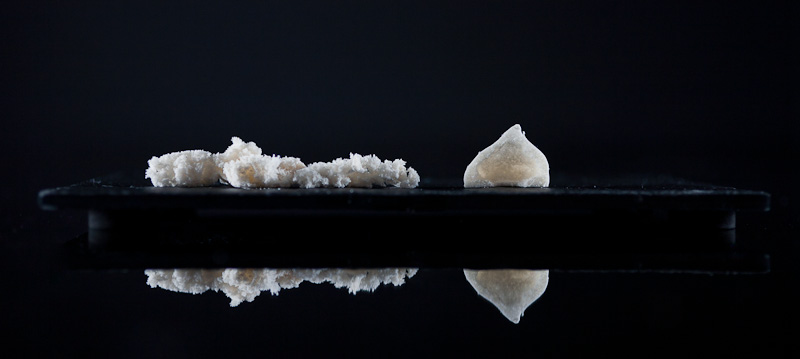
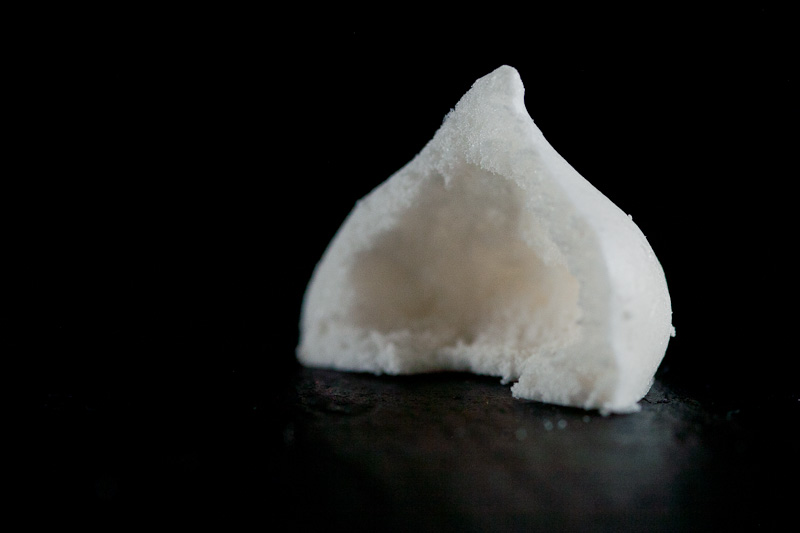
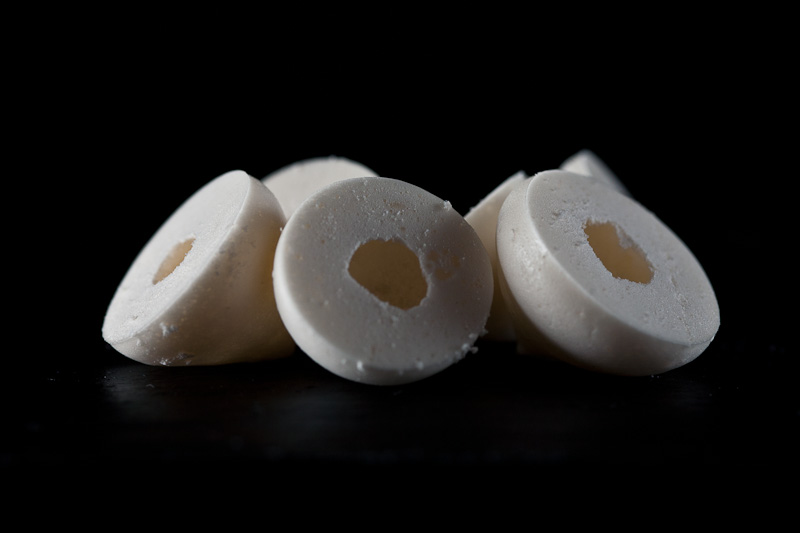
By this time, I’d finished the foie gras preparation for the Pear dish, so was ready to divide out some of it for this dish. I scooped a bit into a zip-top bag, snipped off a corner, and fitted a pastry tip on it (mostly because I’m lazy and didn’t feel like washing my pastry bag).
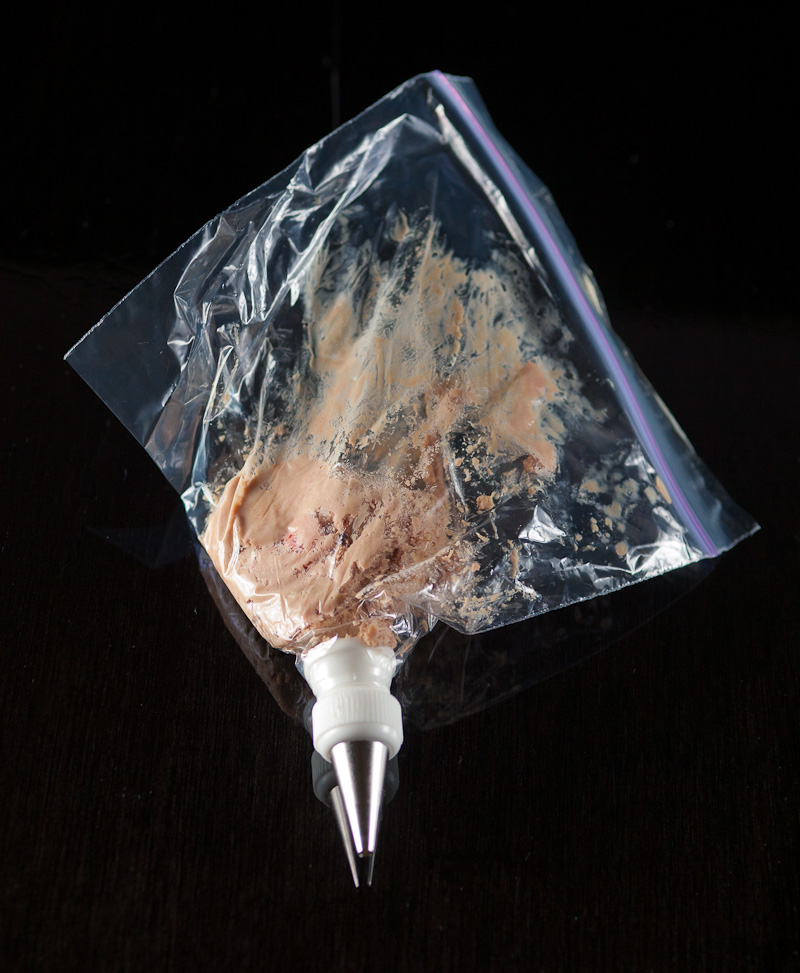
I then piped a small amount into the center of the cinnamon puff, and plugged the hole with a square of apple candy.
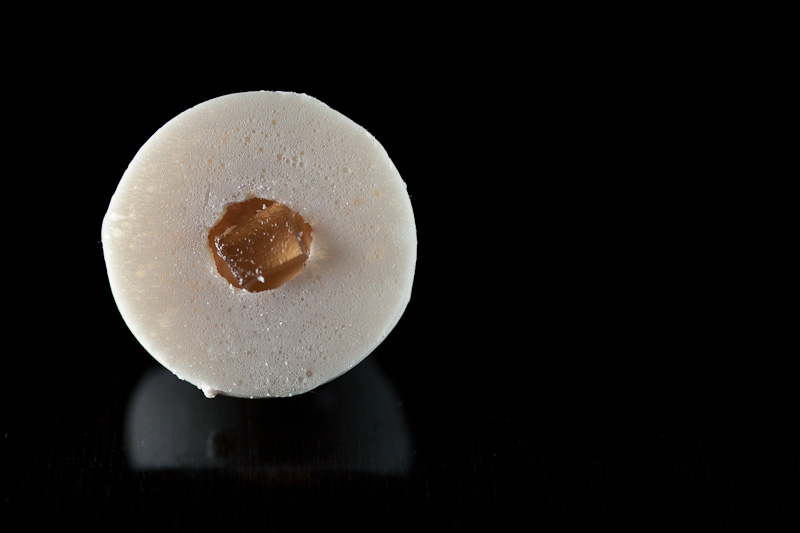
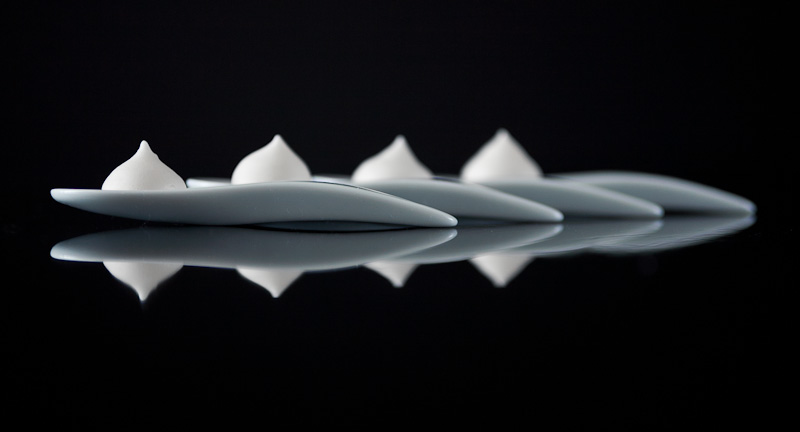
Et voila! I plated a few bites on some shallow Montgatina spoons I recently bought; I found them on clearance because the serviceware company went out of business recently. The puffs are small enough to enjoy in a single bite. This was actually the first of these two foie dishes that I ate, and was my first at-home experience tasting the fruit of my foie gras labors. I had no mental image of what it would taste like other than “I think I remember foie gras tasting pretty ok”. I was taken aback by the flavor, the gamey-ness of the foie and how loud a note it is in this dish. I tried a few completed puffs, and honestly wasn’t sure if I wanted to be the best of friends with the foie gras. It skeeved me out ever so slightly, and I needed some time to get snuggly with it. In the Pear dish, it’s well-complimented and so easier to be introduced to, and I found when I returned to these puffs to try more a day later, I enjoyed them much more. The cinnamon/spice puff is lovely and warming and wintery, and it’s a natural compliment to the apple cider candy. The foie offers a nice creamy textural center to the crispy exterior, and it’s flavor is nice if not all the way sensical to me. Overall I like this dish because of the sheer wildness of its creation, and I can’t wait to play more with the methocel.
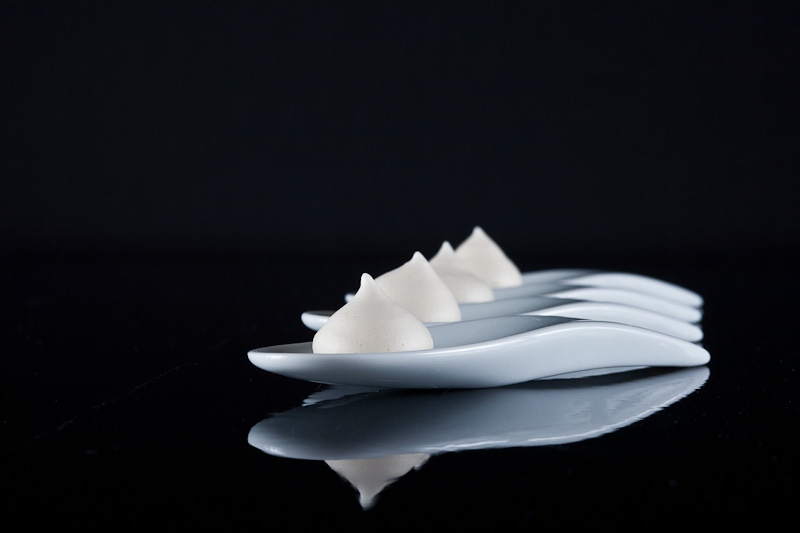
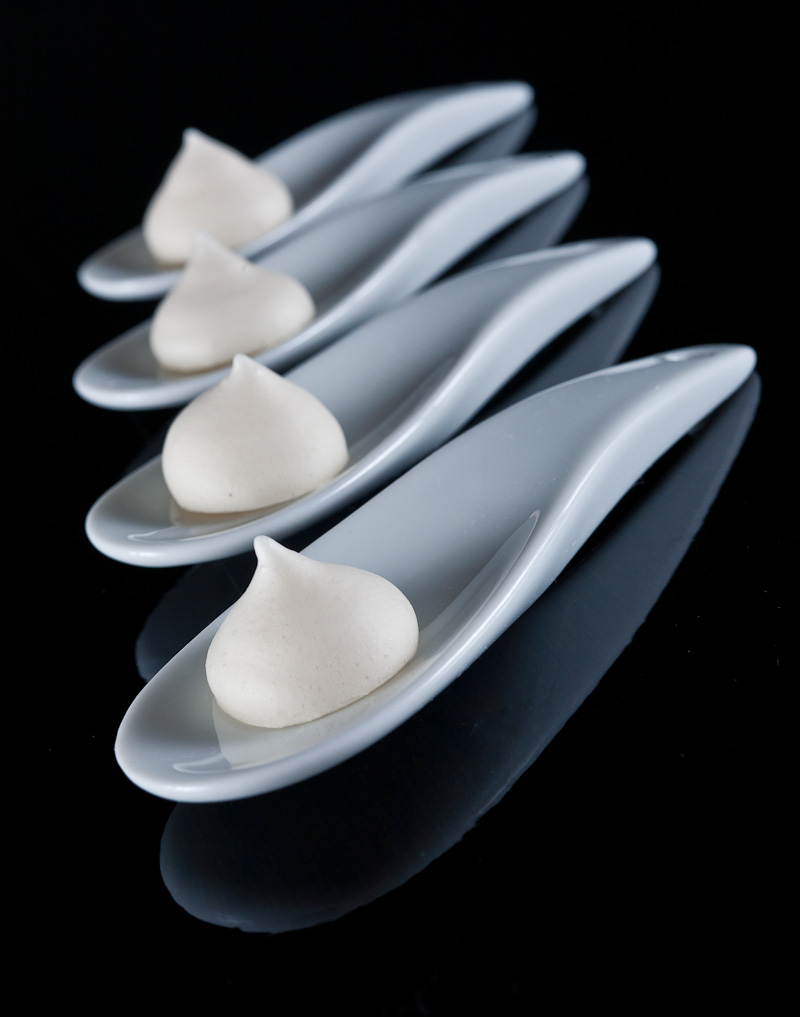
Hi Allen!! Your dishes look amazing! Quick question… where do you get dry licorice extract? I have dry licorice root. Thanks for your help!!
Hi Norma;
I got a tub of “licorice powder” from L’Epicerie (maybe this is what you have too?):
http://www.lepicerie.com/customer/product.php?productid=160600&cat=0&page=1
I think (but am not sure) that this is different from “dry licorice extract”, though it seems to behave similarly for me in all these recipes. It’s notably bitter for me; after using it a bit I tend to try to find ways to neutralize it’s final bitter notes without lessening its flavor (which I like).
Nice job on the presentation. The apple cider candies look especially cool.
I don’t know if you’re much of a podcast listener, but This American Life put out a great piece last week on fois gras, or something like it anyway. I think you might enjoy it. You can find it here. The segment starts at about 36:37 and runs for a good twenty minutes. Put it on when you’ve got a sinkful of dishes to wash or something.
Hi Allen!!! HELP! First, I hope you are doing great!!! I made de chocolate, Avocado, Lime Ice Cream dessert. Everything turned out great except the pliable ganache. It never set. The only thing that I can Imagine is proportions. I have a similar recipe for pliable ganache and it uses a lot less cream. Could it be a mistake in the recipe? My Alinea book recipes goes something like 50 g sorbitol, 1 leaf gelatin, 375g chocolate, a couple other things and then, 900g of cream… Is that right?? It tasted delicious but it ended up like a pudding. The other similar recipe I have from another source has practically same amounts of ingredients but it calls for only 300g of cream. I just want to know if I’m doing something wrong or the 900 g of cream is wrong….
Thank you so much for your help.
Hi Norma;
I didn’t have a need to alter the recipe in the book, and did use 900g cream. The ganache also contains agar in addition to the gelatin and sorbitol, as well as glucose. It sounds like maybe one hydrocolloid got skipped when you tried it, could that be true? Honestly this ganache strikes me as one of the more technically-complex hydrocolloidy recipes in the entire book, and I’m still not terribly sure I fully understand how all the ingredients work together.
Hi Allen,
I remember using the agar agar, the gelatin sheet, I am pretty sure I used every ingredient. I am also sure I measured correctly. It called for one leaf gelatin, I suppose these are standard in size, right?! I’ll just have to try it one more time I guess. Anyhow, have you had a chance to get your hands on a centrifuge? Thank you for taking the time to respond.
Hi Allen,
I tried the recipe again and it worked great! Maybe I missed something the first time around. I had already made the rest of the components of the dish so I just had to plate it. It looks amazing. Thanks for your help!